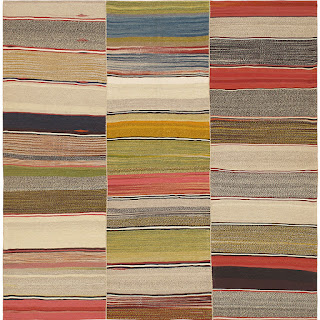Identify and Assess Your Vintage and Antique Rugs
The rich history and intricate beauty of vintage and antique rugs have captivated collectors for centuries. But for the uninitiated, these woven treasures can be shrouded in mystery. How do you identify the origin and type of a rug? What factors determine its value? Fear not, for this blog sheds light on these questions, transforming you from a curious observer to a confident rug aficionado!
Decoding Rug Labels: A Key to Unlocking the Past
Many vintage and antique rugs come with woven or sewn-in labels. While not always present, these labels
can be a valuable source of information. Here's what you might find:
● Country of Origin: Look for names like "Persia" (Iran), "Turkey," or "India," which can give you a general idea of the rug's heritage.
● Brand Names: Reputable rug manufacturers might include their brand names, indicating a specific quality standard.
● Material Information: Labels might mention wool, silk, or cotton, revealing the rug's fiber content.
● Date Codes: Some labels discreetly include a date code, offering a clue to the rug's age. However, deciphering these codes can require research specific to the manufacturer.
A Collector's Guide: Exploring the Diverse World of Antique and Vintage Rugs
The world of antique and vintage rugs boasts a stunning variety. Here's a glimpse into some common types you might encounter:
● Persian Rugs: Renowned for their intricate knotting techniques, rich colors, and detailed patterns, Persian rugs represent a pinnacle of rug weaving artistry. Popular subcategories include Tabriz, Heriz, and Kashan rugs, each boasting unique design elements.
● Kilim Rugs: These flat-woven rugs, often featuring geometric patterns and bold colors, originate from various regions like Anatolia and Central Asia. Kilims are known for their durability and versatility, making them popular choices for modern interiors.
● Moroccan Rugs: Moroccan rugs, including Beni Ourain and Azilal rugs, are known for their plush piles, geometric patterns, and use of natural dyes. They add an exotic touch to any space.
Assessing the Value of Your Vintage Rugs: A Multi-Faceted Approach
Several factors contribute to the value of a vintage or antique rug:
● Age: Generally, older rugs tend to be more valuable, especially those in pristine condition.
● Condition: Signs of wear and tear, repairs, or fading can significantly impact value. A well-preserved rug with minimal damage will command a higher price.
● Rarity: Unique or uncommon rugs, particularly those with specific design elements or weaving techniques, can be highly valuable.
● Material Quality: Rugs made with high-quality fibers like silk or wool are generally more valuable than those made with synthetic materials.
● Design Complexity: Vintage rugs with intricate patterns and a high knot count (indicating a denser weave) are often considered more valuable.
Rug valuation can be complex. It is highly recommended that you consult a professional appraiser experienced in vintage and antique rugs for an accurate assessment.
By understanding rug labels, exploring different types, and considering the value factors, you'll be well on your way to appreciating and potentially even collecting these beautiful pieces of history. So, the next time you encounter a vintage or antique rug, don't be afraid to delve deeper – the story woven within might surprise and delight you!




Comments
Post a Comment